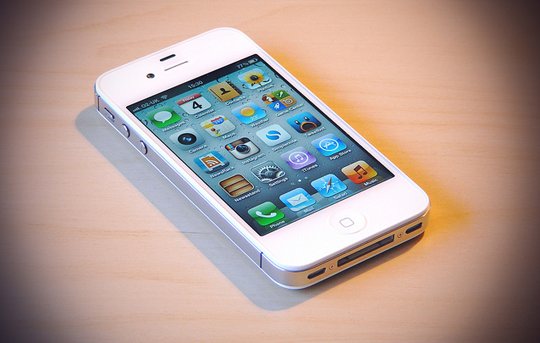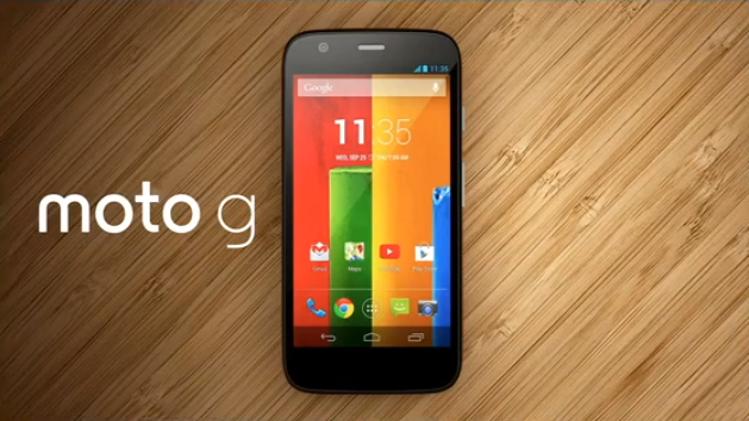
Apple has a problem. It’s not a problem that pertains to its high-end iPhone 5s, and it’s not even a problem with the mid-range, somewhat superfluous iPhone 5c. It’s actually the iPhone 4S that is an issue for Apple. Sitting at the bottom of the company’s smartphone range and being offered for peanuts if not free, the iPhone 4S was previously thought of as a rather capable budget handset. And it still is.
The problem that Apple now faces is that all those cheap Android phones that we’ve all laughed at over the years are starting to get a bit big for their shoes. In fact, some are downright great handsets, with one in particular doing its best to shake up the way we think about smartphones and what we should be paying for them.
I am, of course, talking about the Motorola Moto G…
Now as some of you reading this may know, I’m not in the United States, but rather the UK. England to be precise, and we’ve had the Moto G for a little while already. We’ve been waxing lyrical about its prowess and buying them in droves for weeks. But the Moto G is a relatively new phenomenon to most of you keeping abreast of technology news from over the pond, so let me explain why it’s so interesting. Especially to someone who’s a self confessed iPhone fan. I’ve tried Android and come back to iOS on plenty of occasions, and I’ve written about that plenty. Even so, this Moto G thing can’t be ignored by anyone, especially Apple.

So yes, obviously the Moto G is Android-powered. It’s got a big 4.5-inch screen that houses pixels of the 720×1280 resolution variety. That’s a higher-than-retina density of 329ppi for those who like that kind of thing.
It’s fast too. 1GB of RAM and a CPU that clocks in at 1.2GHz fast. The camera could be better, but at 5-megapixel it’ll still take photos that won’t have you throwing the damn thing out the window, that’s for sure.
The Moto G is getting stellar reviews across the internet too, and I know half a dozen people that have either picked one up already, or are in the process of doing so.
Oh, and it’s $179. Unlocked, without a contract. And if you shop around, it can be found for less, too. On-contract, it’s free.
So, that’s the budget Android handset of choice at the moment. What about iOS?
Well, we’ve a two-year old iPhone 4S. It’s smaller, with a 3.5-inch screen. A similar density of 326ppi gets you the original Retina display, and a resolution of 640×960.
The thing’s powered by a two year old Apple A5 chip that runs at 800MHz and that’s backed up by 500MB of RAM. Oh, and it may or may not be worth mentioning that that lower-clocked A5 has half as many cores as the chip in the Moto G. Still, until the iPhone 5s Apple didn’t really seem to care about the specs race anyway.
Of course, that was with good reason. Apple’s iPhones always had a knack of being super-responsive. Super-slick. Tap something, and the phone reacts. Swipe through a list and everything scrolls in what at least appears to be a 1:1 movement. Android couldn’t compete with that.
But this is where the problems begin to creep in for Apple and its aging iPhone 4S. Post-iOS 7, the budget iPhone can’t boast such performance. Swiping is laggy, tapping things doesn’t always mean something happens, and we’re starting to see games that really want an iPhone 5 or above in order to work as the developer intends. That’ll be that fragmentation we always like to accuse Android of, then.
So, as I amble towards the point I set out to make when I sat down to write this, I can’t help but wonder why Apple didn’t do the decent thing and make the iPhone 5 the new budget option for those of an iOS persuasion.
The answer, of course, is that iPhone 5c. Apple wanted a three-tiered approach to its iPhone sales, and it couldn’t expect people to pay a premium for the iPhone 5c over the iPhone 5 when the only difference was going to be some colored plastic shells. In fact, some would argue that the iPhone 5 is the more premium-looking device, which would have caused all kinds of problems with branding.
Instead, we’re left with the iPhone 5 being end-of-lifed, and the iPhone 4S given a stay of execution. Which was fine, until someone at Motorola decided to show us all what budget phones can do. Before the Moto G was conceived, and before the iPhone 4S became a liability for a company that just isn’t willing to let it go.